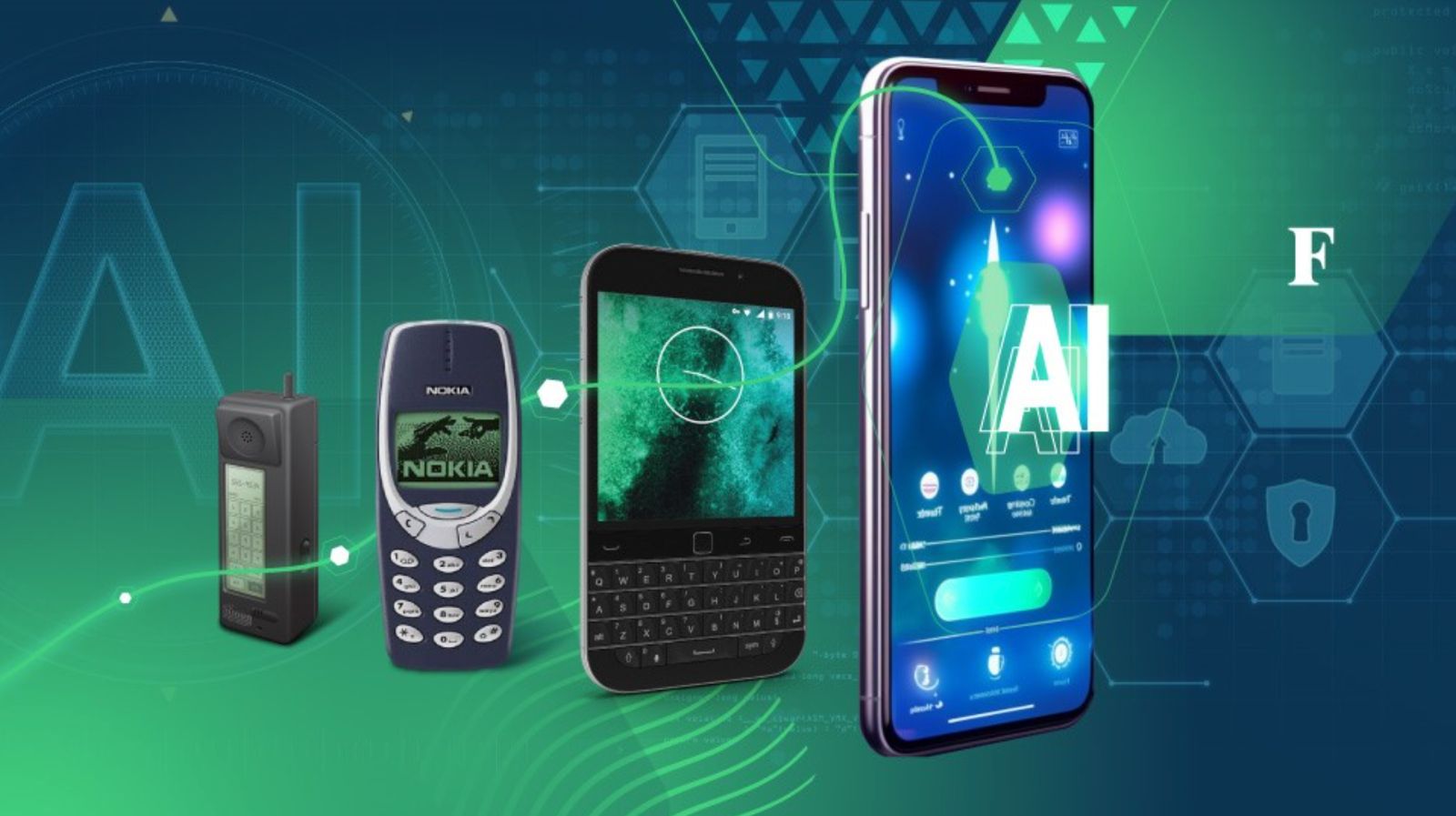
The journey from IBM Simon, the world’s first smartphone, to today’s sophisticated AI-powered devices, reflects a remarkable evolution in mobile technology.
Introduced in 1994, IBM Simon was a groundbreaking device for its time, combining the functions of a mobile phone and a PDA (Personal Digital Assistant). Fast forward to the present, smartphones are equipped with Artificial Intelligence (AI) that can anticipate user’s needs, automate tasks, and provide personalized experiences.
Evolution of mobile technology
The development of the IBM Simon marked a significant milestone in the early stages of the mobile industry. With features like a touchscreen, email capability, and a suite of apps including an address book, calendar, and calculator, it showcased the potential of mobile technology.
Building on this foundation, the 2000s saw the emergence of smartphones like BlackBerry and Windows Mobile devices, which brought advanced features such as email, web browsing, and basic apps to the forefront. These innovations paved the way for further advancements, leading to Apple’s 2007 introduction of the iPhone. The iPhone’s multi-touch interface, App Store, and seamless hardware-software integration revolutionized the industry, redefining user expectations and capabilities. This evolution set the stage for the next major leap in mobile technology with the integration of artificial intelligence.
The AI Revolution in Mobile Technology
The integration of AI into mobile technology started gaining momentum in the 2000s with the increase in data availability and early research. In smartphones, AI has been crucial for years, mainly in areas like natural language processing (NLP) and computational photography. Unlike larger models used on cloud servers, the data models for these functions are smaller but still highly effective. On-device AI enhances response speed, privacy, and security, making it an essential part of modern mobile technology.
A significant milestone came with the launch of Apple’s Siri in 2011, a trailblazer in voice recognition that could perform tasks and answer queries. This was followed by Google Now in 2012, which evolved into Google Assistant, offering predictive capabilities and deep integration with Google services. Microsoft’s Cortana, introduced in 2014, extended AI’s reach into Windows Mobile and later Windows 10, while Amazon’s Alexa, initially part of the Amazon Echo, found its way into mobile devices that same year, providing robust voice control over various services.
Current trend of AI in Mobile Technology
AI’s impact extended beyond virtual assistants to everyday mobile features. Camera enhancements illustrate this well, with AI algorithms improving photo quality, enabling advanced editing, and introducing features like facial recognition and scene detection. It also revolutionized personalization, analyzing user behavior to tailor content, app suggestions, and predictive text input. In health monitoring, AI integrates with sensors to track and analyze health data, offering valuable insights and recommendations. Moreover, AI has strengthened mobile security through biometric authentication, such as facial recognition and fingerprint scanning, along with advanced threat detection.
Future Trends of AI in Mobile Technology
The future of AI in smartphones is promising, with developments in machine learning and deep learning driving devices to become increasingly intelligent and capable. These advancements will allow phones to continuously learn from user behavior, adapt to evolving preferences, and deliver highly personalized experiences. Furthermore, enhancements in natural language processing and computer vision will significantly boost the functionality of AI-powered smartphones, making them more intuitive and responsive to user needs.
One significant development of AI in smartphones is the existence of GenAI smartphone. These devices are a specialized group of AI smartphones that use generative AI to create unique content, rather than just delivering preprogrammed responses or performing predefined tasks. They feature built-in generative AI apps and tools, specialized CPUs for complex AI tasks, and the ability to run AI models directly on the device without relying on cloud support. Based on a report, in 2024, only 11% of smartphone shipments are GenAI smartphones. However, in five years, this figure is expected to rise to 43%, and the global install base is anticipated to surpass 1 billion devices by then.
Conclusion
From the IBM Simon to today’s AI-driven smartphones, the journey has been nothing short of revolutionary. What began as rudimentary digital assistants has evolved into powerful, intelligent systems that enhance daily life in various ways. With the rise of generative AI smartphones, a new era has emerged. These advanced devices not only utilize AI to improve user experiences but also generate unique content and perform complex tasks directly on the device. As AI technology continues to advance, smartphones will become increasingly adept, seamlessly integrating into routines and offering unparalleled levels of personalization and functionality. The future of mobile technology is not just bright; it’s profoundly intelligent and innovative.



